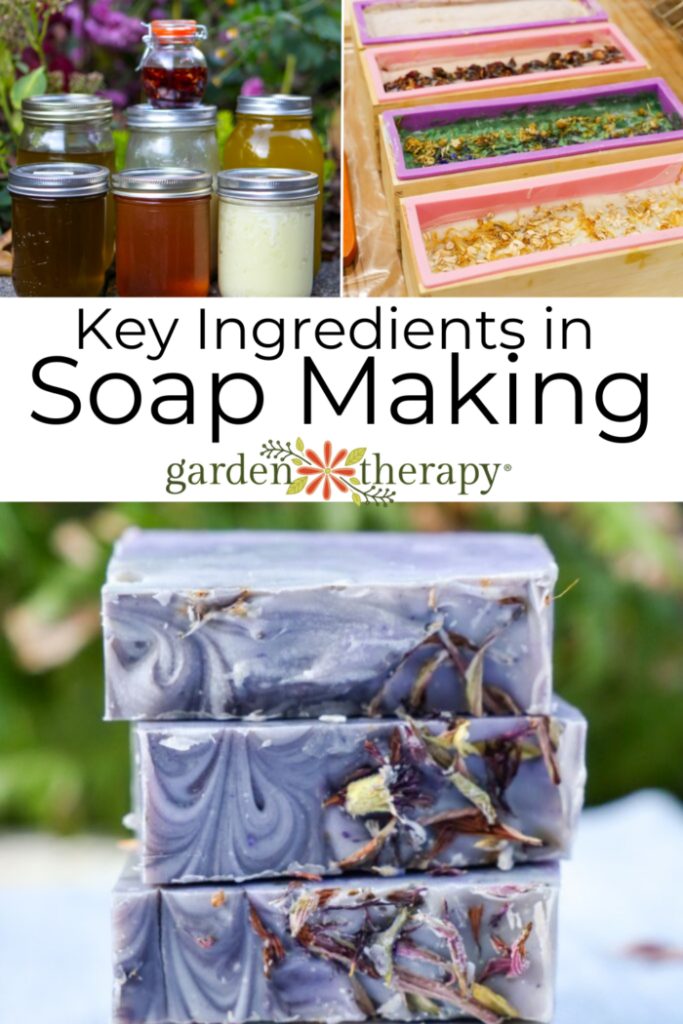What is soap made out of? Much of modern soap-making relies on the same process and ingredients that our ancestors used. This simple chemical reaction of turning oils into soap is something everyone can do at home with the right ingredients.
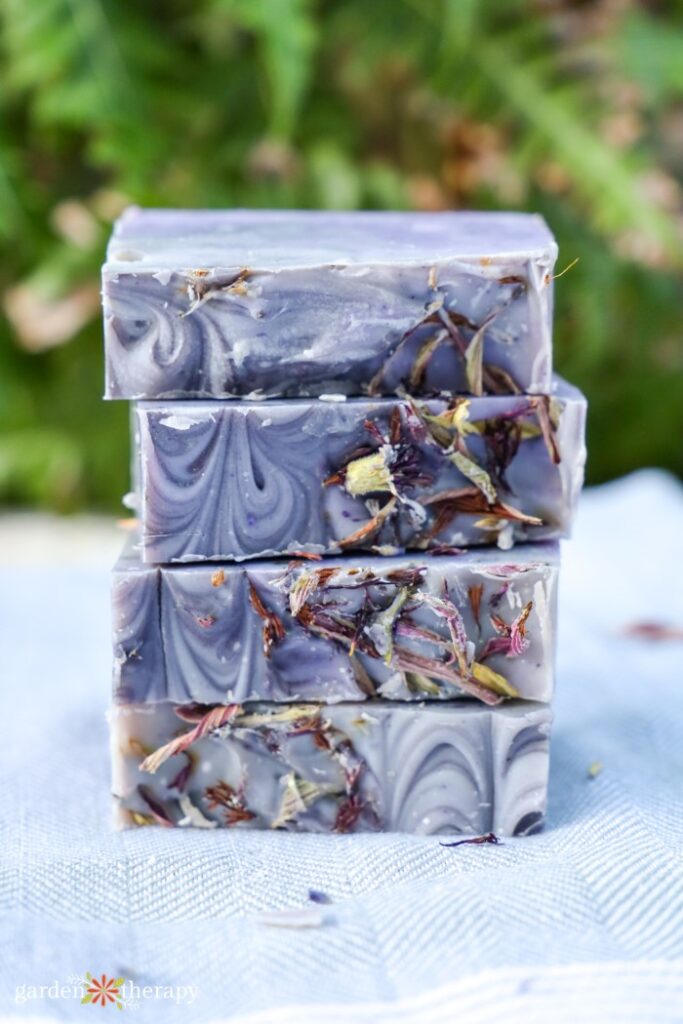
When you pull out all the oils and butter for your soap, it’s hard to believe that these liquids turn into a hard bar of soap. I feel like a chemist when I don my safety gear, carefully measure my ingredients, and mix them all together.
Or perhaps I feel like a magician because making my own soap feels like magic.
Soap making can be as simple or complex as you like. When it comes down to it, soap is made of only three key ingredients: oil, lye, and water. But having a successful bar of soap can get a lot more complicated than that.
From traditional soap making to cold process soap, here’s what ingredients go into soap making.
This post will cover…
- Traditional Soap Making Ingredients
- Oil
- Wood Ash
- Cold Process Soap Ingredients
- Oil
- Lye
- Fragrance
- Colour
- Frequently Asked Questions About Soap Ingredients
- Try These Soap Recipes

Traditional Soap Making Ingredients
The first recorded proof of soap-making dates back to Babylon in 2800 BC. The soap-making formula was written on a clay tablet, detailing the mixture of oil and wood ash. This is the earliest known chemical reaction!
Let’s break down these soap ingredients.
Oil
Like modern soap making, a key component of soap is oil or fat. Each one will have different qualities, some more moisturizing while others create a good lather.
In traditional soap making, you would see some of the following oils and fats used:
- Lard
- Tallow
- Coconut oil
- Olive oil
- Palm oil
- Shea butter
- Cocoa butter
- Neem oil
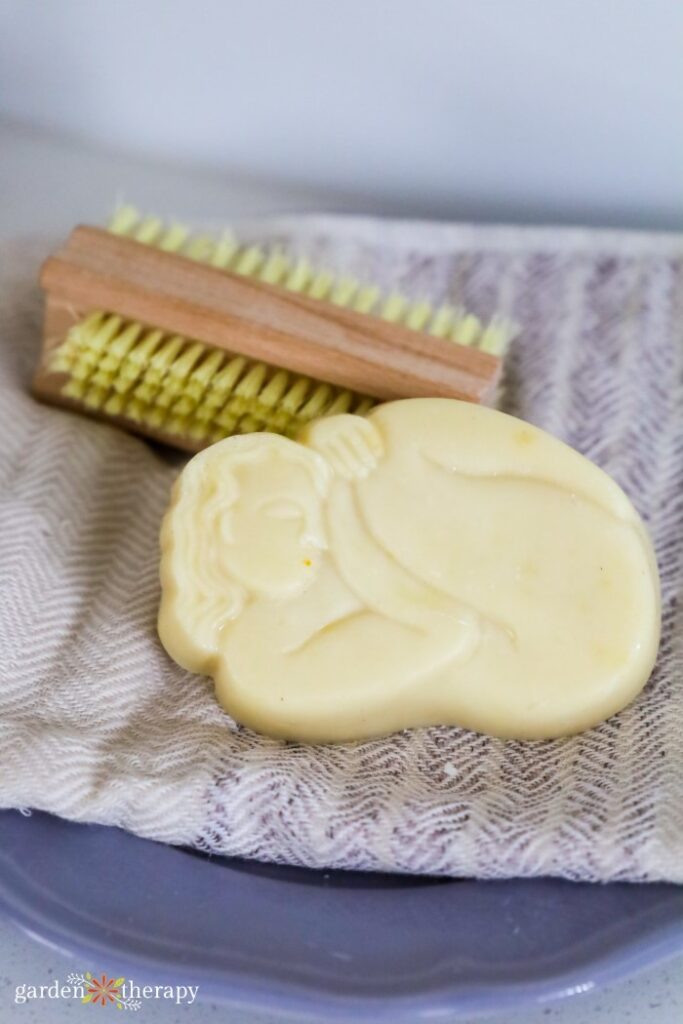
Wood Ash
In traditional soap, wood ash is needed to create the chemical reaction. But, you can’t just use any ash. Specifically, it needs to be white wood ashes.
Lye water is created by pouring boiling water over the cool wood ashes. The mixture then cures overnight before it’s ready for the oils to be added.
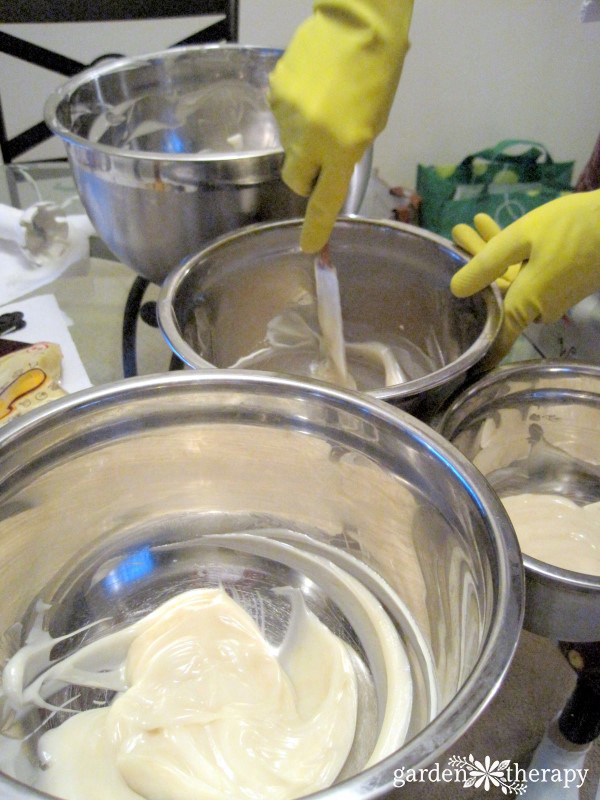
Cold Process Soap Ingredients
Nowadays, things are a little easier when it comes to making soap. But, it still relies on those primary ingredients of oils and fats as the base combined with lye water. Cold process soap is what most hobbyists or handmade soap makers will do to make their soaps.
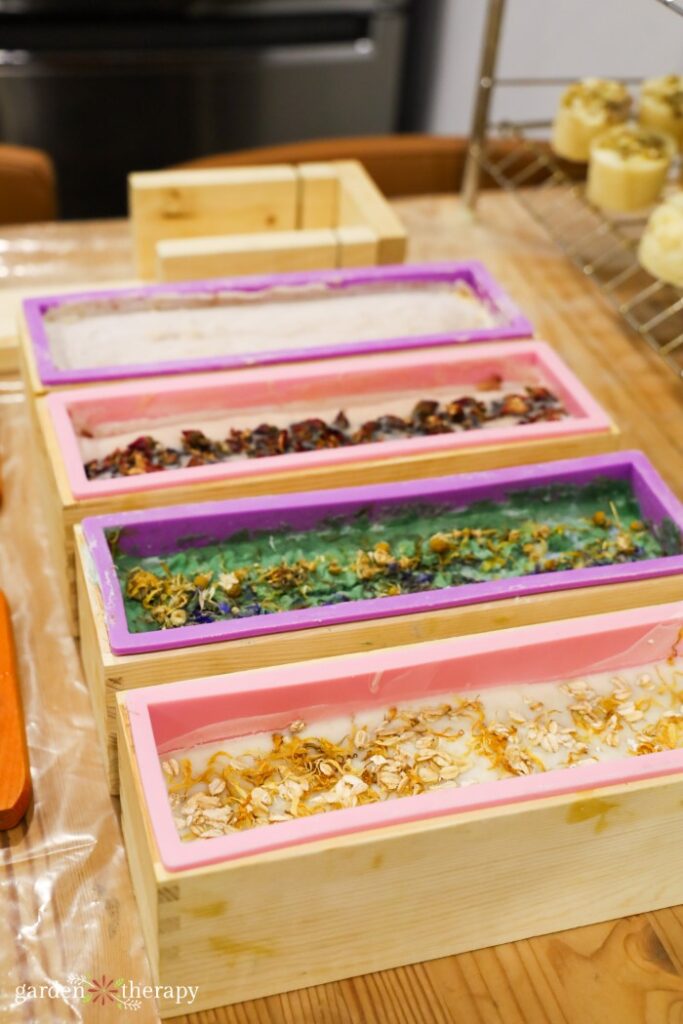
Oil
The primary base of the soap is oils, fats, and butters. I combine many different oils in one recipe to get a perfect formula with many benefits.
These are then melted together before being added to the lye water. Here are some of the most common oils and butters and when you might use them.
- Lard: while traditional, lard is still a great soap-making ingredient. It produces an overall moisturizing soap with a good lather and comes at a low price point. However, it’s not plant-based and finding it without any additives can be tricky sometimes.
- Olive oil: more often than not, olive oil has the highest percentage in my soap recipes. The thick oil is known for being moisturizing, and it creates soft bars.
- Grapeseed oil: grapeseed oil is very lightweight and contains many antioxidants and linoleic acid. I usually add a little bit of it to most of my recipes.
- Sunflower oil: I like using sunflower oil for its low price point. It has a great lather but can leave the skin feeling slightly oily, so it should be combined with other oils. It’s got tons of fatty acids and vitamin E.
- Jojoba oil: technically a liquid wax, jojoba oil makes a bar very hard and stable. Just a hint is good for cold process soap.
- Coconut oil: one of my favourites, coconut oil has tons of cleansing properties and produces very large bubbles when lathering.
- Palm oil: this is a very affordable oil that can make up most of a soap’s base. It’s often combined with coconut oil for a hard bar with a good lather. However, palm oil has major sustainability issues, so it’s important only to buy it from trusted sustainable suppliers.
- Rice bran oil: with a texture similar to olive oil, it moisturizes and creates a soft soap. It’s rich in antioxidants and vitamin E.
- Cocoa butter: solid at room temperature, cocoa butter adds a very luxurious and moisturizing effect to soap. It’s best used at smaller percentages.
- Mango butter: while technically solid at room temperature, all it takes is some contact with skin to melt. It’s high in Vitamin E and Vitamin C, and very moisturizing.
- Shea butter: shea butter helps to harden the soap, feeling very moisturizing on the skin.
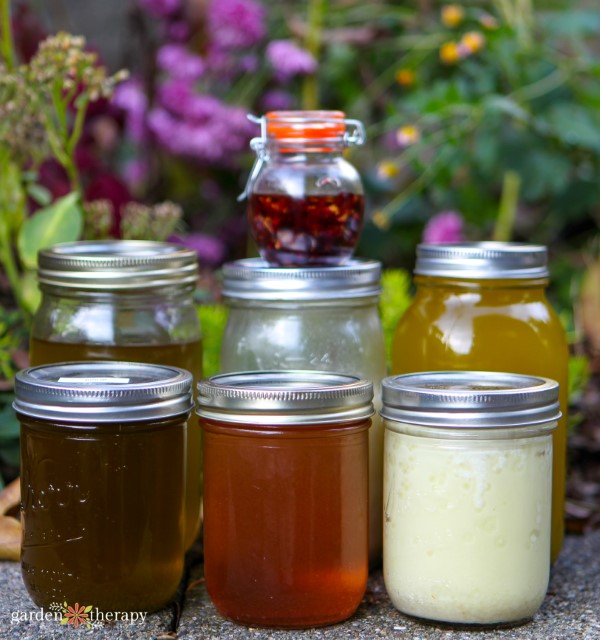
Lye
In traditional soap making, lye water was made by combining wood ash with water. Luckily, things are much easier with the invention of caustic soda, the chemical compound known as sodium hydroxide (NAOH). You can find it as pellets, flakes, and powders.
Potassium hydroxide (KOH) is also sometimes referred to as lye or as caustic potash. The resulting soaps are going to be softer than those made with caustic soda. Caustic potash requires less water to dissolve, so the cleaning properties are actually higher. It’s mostly used for liquid soap.
Lye is then added to water to create your lye water. It instantly gets really hot and emits a strong odour, so you only want to do this in a well-ventilated area.
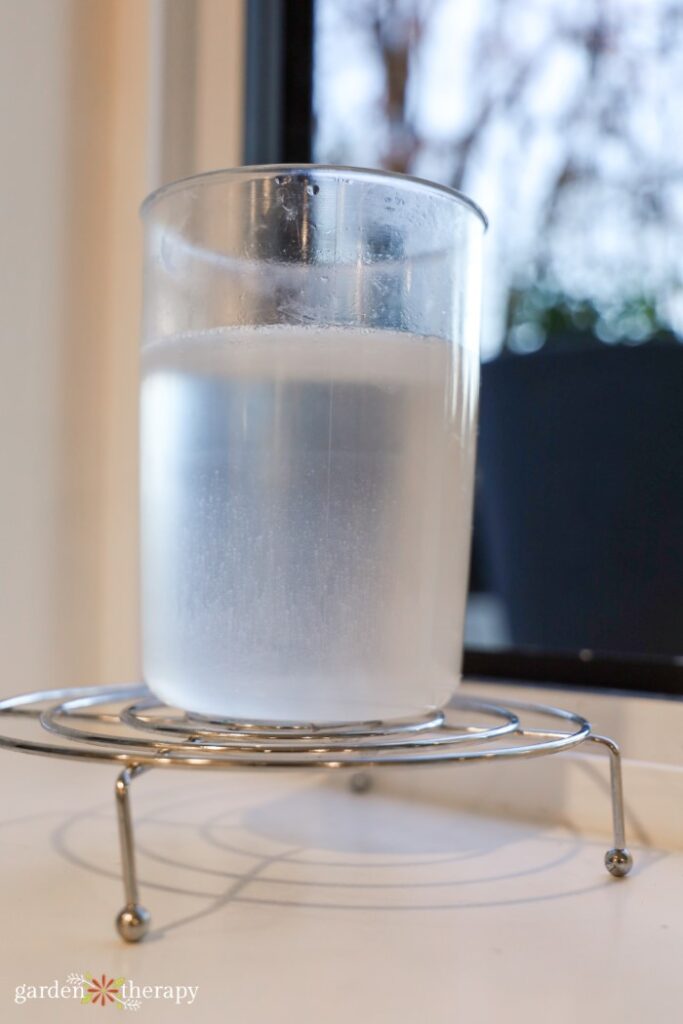
Fragrance
Of course, many soaps also have fragrances. On commercial soaps, the scent is often just listed as fragrance, which is a vague term that represents an artificial chemical mixture. Most fragrances are considered irritants and can affect allergies and more.
Fragrance oils are available for purchase online in just about any scent you can think of to add to soaps, candles, and other homemade products.
For all of my soaps, I personally use essential oils. These are plant extracts that retain the scent and some properties of the plant. They’re 100% natural and what I turn to when making all of my beauty products.
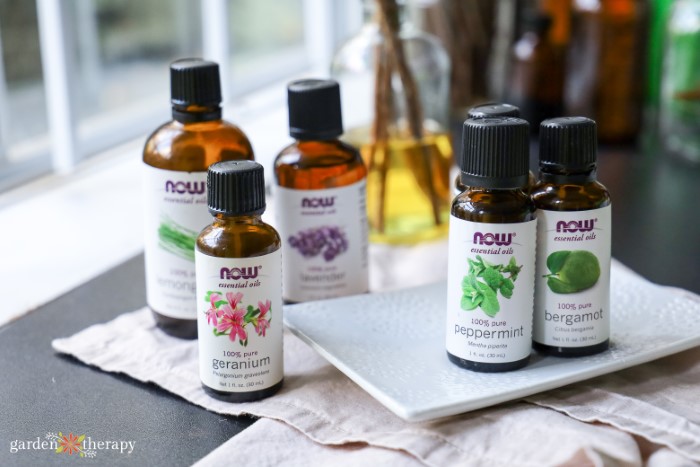
Colour
Like fragrance, you can have many artificial colours. Mica is always a great option. Mica is comprised of minerals that have been subject to extreme heat and pressure. You can find them in many vibrant colours, often with a shiny hue.
You can also find colourants which are made from oxidized metals. These aren’t as fine and don’t have that shine. They’re quite vibrant and create a matte appearance.
You can also find many other natural powders like beetroot, matcha, cocoa, turmeric, indigo, madder root, spirulina, charcoal, and more.

Frequently Asked Questions About Soap Ingredients
All soap must have at least three ingredients: a fat of some kind (rendered animal fat or plant-based oils and butters), lye, and water. The fats are the core base of the recipe.
Lye is very caustic and can cause chemical burns when handled improperly. But when used correctly, it’s completely safe for soap-making. When you mix lye with the oils and water properly, the chemical reaction between the ingredients means there’s no lye left in the soap. After the soap cures for six weeks, it’s safe for use on the skin.
If working with lye scares you, you can also make soap without lye using the melt and pour method.
Lye is integral part of saponification. This chemical reaction turns oil and fats mixed with lye into soap. Without lye, all you have is oils and fats!

Try These Soap Recipes
Now that you know what soap is made out of, try some of these fun soap recipes.

